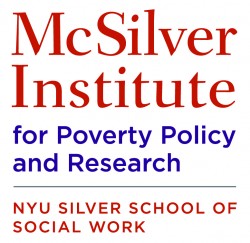In the recent wake of cuts to the Supplemental Nutrition Assistance Program (SNAP), also known as food stamps, legislators have proposed a new policy to increase food security among those most affected by limited access to adequate nutrition.
On September 29th, the United States Department of Agriculture (USDA) announced a $31.5 million increase in funding to the recently developed Food Insecurity Nutrition Incentive, a Farm Bill program that will make fruits and vegetables more readily accessible to SNAP recipients.
 Increased discussion on the topic has emerged as a result of World Food Day, which occurred on October 17th, analyzing the global impact of food insecurity. The Food and Agriculture Organization of the United Nations released a report that found overall progress in decreasing food insecurity. Between 1992 and 2014, global hunger, characterized by inadequate calorie, protein, and micronutrient intake, declined by 209 million. However, an estimated 805 million people worldwide face chronic hunger. Obviously, despite a decrease in food insecurity, much more needs to be done in the future.
Increased discussion on the topic has emerged as a result of World Food Day, which occurred on October 17th, analyzing the global impact of food insecurity. The Food and Agriculture Organization of the United Nations released a report that found overall progress in decreasing food insecurity. Between 1992 and 2014, global hunger, characterized by inadequate calorie, protein, and micronutrient intake, declined by 209 million. However, an estimated 805 million people worldwide face chronic hunger. Obviously, despite a decrease in food insecurity, much more needs to be done in the future.
The International Food Security Assessment, released annually by the USDA Economic Research Service, offers a ten year projection of food insecurity levels in the world’s most affected nations. One of the most impacted areas will be Sub-Saharan Africa, which is expected to see an increase in food insecurity of 34 percent. This situation could be compounded: in partnership with the United Nations, the Liberian government is investigating how Ebola outbreak in Western Africa is worsening food insecurity in the region.
Direct Service Implications
Domestic initiatives, such as No Kid Hungry, have responded to the issue of food insecurity by promoting access to school breakfasts and summer meals for food insecure children through education and awareness. The McSilver Institute has contributed to further awareness of this issue in its report examining the impact of food insecurity on school performance and both behavioral and physical health. The best route to decreasing food insecurity is through advocacy for local and national initiatives that will implement additional nutrition assistance programs.
Courtesy of McSilver Institute of Poverty Policy and Research who has kindly given SJS permission to syndicate this piece.
Disclaimer: The views and opinions expressed in the Policy News Briefs are not necessarily the views of the McSilver Institute for Poverty Policy and Research or NYU’s Silver School of Social Work. If you have comments or suggestions about this service, contact us at info@mcsilver.org.
Sources:
Our authors want to hear from you! Click to leave a comment
Related Posts



